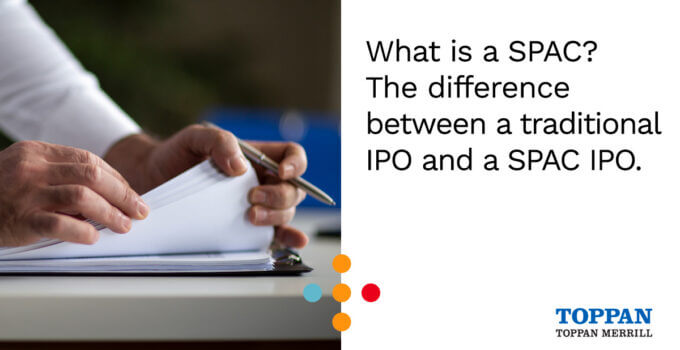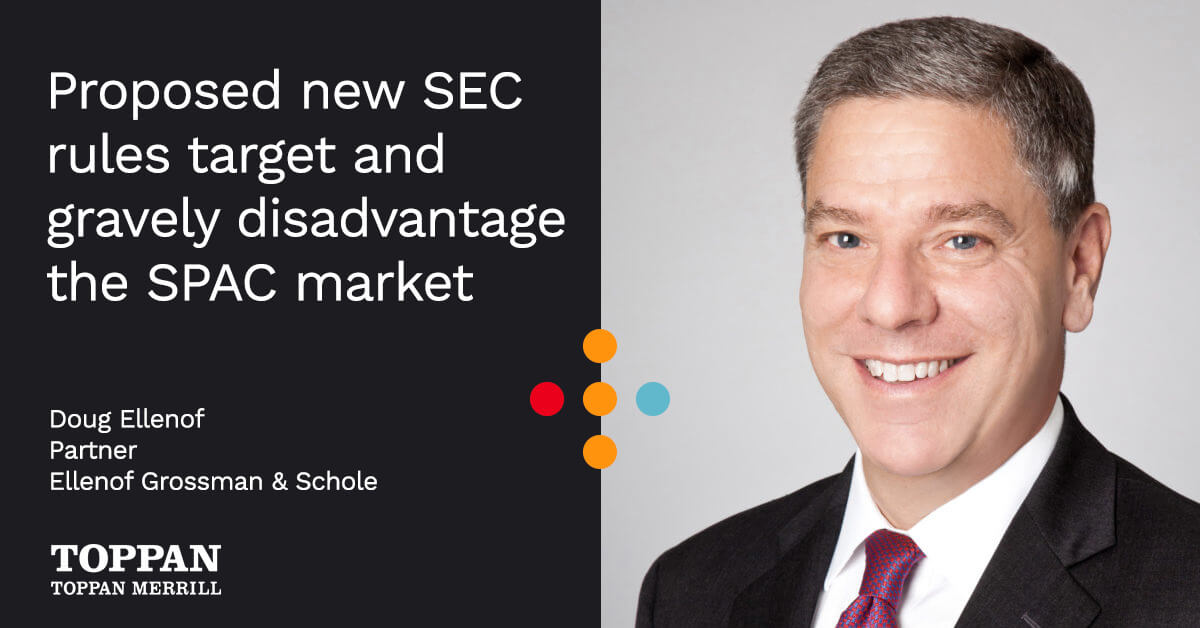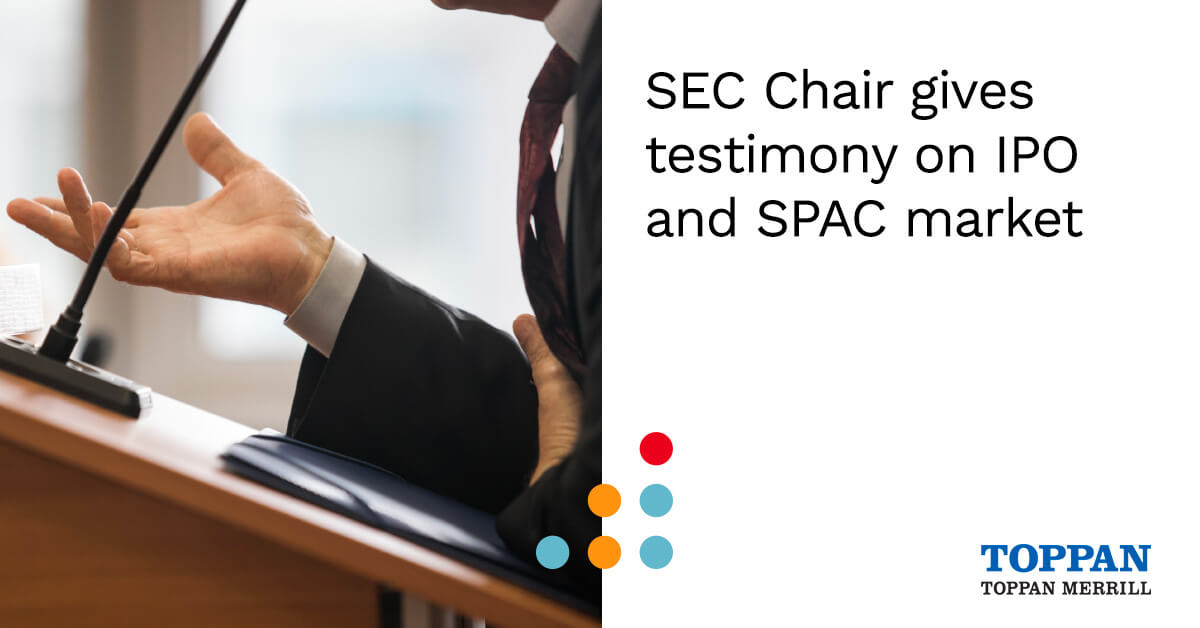A Special Purpose Acquisition Company Initial Public Offering (SPAC IPO) raises capital to combine with a private company to take that company public. The SPAC, oftentimes called a Blank Check Company, is typically led by seasoned private equity, venture capital and asset management professionals skilled in buying and selling companies. The majority of these shell companies are created with a specific vertical market target in mind, like biotech, electronic vehicles or technology. If a target company isn’t already in the cross hairs, then the SPAC team has a fairly short window of time, typically 18-24 months, to complete an acquisition or request an extension or the funds (which are held in an interest-bearing trust account) must be returned to the investors. In either case, at the onset investors don’t know what company they eventually may be investing in.
What is the difference between a SPAC IPO and a traditional IPO?
A SPAC IPO is different than a traditional IPO. A SPAC IPO is formed to raise capital for a future acquisition; because a SPAC has limited business operations it has little information for the SEC to review. Because of that, SPACs can be formed and go public in a matter of months whereas an operating company may take anywhere from nine months to several years to go public when including the required preparations. And because the SPAC and target company agree on the transaction and the price, there’s less price volatility for the target company.
What is the lifecycle of a SPAC IPO?
A SPAC IPO has a relatively short life span with 5 distinct phases in its lifecycle:
- Formation: SPAC IPOs are typically formed by a financial sponsor or sponsor team (often private equity, venture capital, asset management professionals skilled in buying and selling companies) who fund the initial business operations to launch the IPO.
- Initial Public Offering: SPAC IPO seeks investors and raises capital to be held in a trust account to purchase a private company.
- Acquisition Identification: The SPAC’s sole purpose is to identify and bring a private company, public.
- Acquisition Purchase: Once the SPAC has identified the target, its management negotiates with the operating company and, if approved by SPAC shareholders, executes the business combination through SEC filings and approval.
- Exit: Private company completes the merger and emerges as a public company.
As mentioned previously, capital, less operating expenses and management fees, is typically held in a trust account while the SPAC team searches for their target acquisition. Once the SPAC finds its target company, it enters the De-SPAC transaction phase of its lifecycle. The first step in this phase are SEC filings. The SPAC will perform numerous SEC filings announcing the transaction followed by the merger documents (Form S-4, Form F-4 or Special Merger Proxy). The proxy statement/prospectus must contain detailed financial statements of the SPAC and the target company, a description of the post-merger company, its management team, governance structure, share information and more. The SEC conducts a review typically lasting 2-3 months before issuing a notice of effectiveness. SPAC Shareholders will then be solicited to approve the purchase of the targeted company or exercise the option to redeem their pro rata shares. Once approved, the new company will file a Super 8-K within 4 business days of the merger to give notice of the completion of the merger.
What if the SPAC IPO underestimated the amount necessary to acquire its target company?
If the SPAC needs additional capital, it can arrange equity or debt financing through a vehicle known as a Private Investment in a Public Company (PIPE) commitment where private investors purchase securities at a preferred rate.
Once the De-SPAC process is completed, the successor company must operate as a public company and follow SEC reporting and disclosure requirements.
What if the SPAC fails to find a target company to acquire?
If the SPAC does not complete an acquisition within the agreed-upon time frame (typically 18-24 months) the SPAC may request an extension from its shareholders or is liquidated and its funds, which were held in a trust account, are returned to its investors.
Why are there so many SPAC IPOs recently?
The number of traditional IPOs and mergers and acquisitions are all up thanks to a booming stock market, but they pale compared to the meteoric rise of the SPAC IPOs in the last 18 months. SPACs are relatively easier to accomplish than a traditional IPO. In a traditional IPO, the private company must prepare for the event, solicit investors to execute the transaction and is exposed to share price volatility. Going public has significant regulatory hurdles and the process can take a significant amount of time – and money. The SPAC IPO literally turns the process around by creating large investor groups who provide capital upfront to be used to take a company public. And a successful SPAC transaction can mean significant financial returns for the sponsors.
Toppan Merrill is here to help
The experts at Toppan Merrill have supported hundreds of SPAC IPOs and De-SPAC transactions and understand the enormous complexity of the initial transactions as well as the importance of preparing for the rigors of post-IPO compliance and the ongoing regulatory compliance needs of a public company. Connect with one of our experts at [email protected] or by calling 800.688.4400.



